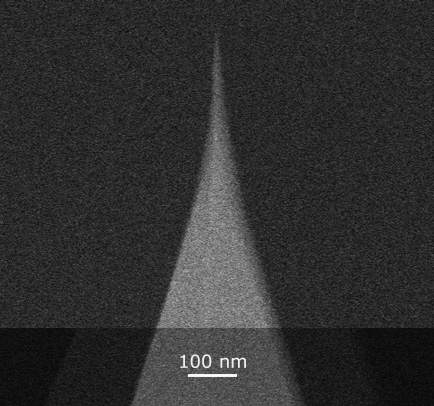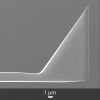

MagneticMulti75-G AFM probes used in a studyThu Feb 08 2024


Lock-in Amplifier Based Peak Force Infrared MicroscopyMon Jan 15 2024


Happy Holidays from NANOSENSORS™ AFM probesSun Dec 24 2023
With this seasonal Special Development Christmas Tree AFM tip with a light snow coating, we would like to wish all users of our AFM probes Happy Holidays and a good start into the New Year!
We are looking forward to another year with you.


Season’s Greetings from the whole NanoWorld® team!Sat Dec 23 2023
Christmas cheer can be found in the tinies of places if you look hard enough. Enjoy the holiday season with your friends and family and see you next year.


Merry Christmas and a Happy New Year! May 2024 be your best year yet!Fri Dec 22 2023
The MikroMasch team wishes you a Merry Christmas and a Happy New Year! May 2024 be your best year yet!


Merry Christmas and Happy New YearFri Dec 22 2023
Happy Holiday Season from BudgetSensors! All the best to you in 2024!
#AFM #AFMProbes #AtomicForceMicroscopy #AFMtips #Holidays #christmastree


Video-Rate High-Speed-AFM To Study Permeability Barrier Within Yeast Nuclear Pore ComplexesThu Dec 14 2023
Discover how nanotools QUANTUM-AC10 (Soft & Sharp) with 0.1N/m cantilevers and 2-3nm radius are applied for video-rate HS-AFM imaging of nuclear pore complexes.
https://www.nanotools.com/blog/video-rate-high-speed-afm-to-study-permeability-barrier-within-yeast-nuclear-pore-complexes.html
Title: Dynamic molecular mechanism of the nuclear pore complex permeability barrier
Authors: Toshiya Kozai, Javier Fernandez-Martinez, Trevor van Eeuwen, Paola Gallardo, Larisa E. Kapinos, Adam Mazur, Wenzhu Zhang, Jeremy Tempkin, Radhakrishnan Panatala, Maria Delgado-Izquierdo, Barak Raveh, Andrej Sali, Brian T. Chait, Liesbeth M. Veenhoff, Michael P. Rout, Roderick Y. H. Lim
Publication: bioRxiv
Pubisher: Cold Spring Harbor Laboratory
Date: April 14, 2023


Last exhibition day at 2023 MRS Fall Meeting & ExhibitThu Nov 30 2023


Did you know that we now also sell the original Olympus AFM probes?Wed Nov 29 2023


NanoWorld at MRS Fall Meeting & Exhibit 2023 this weekTue Nov 28 2023
NanoWorld CEO Manfred Detterbeck is in Boston for the MRS Fall 2023 Meeting & Exhibit this week.
Will you be there too? You’ll meet him at some of the sessions or at NanoAndMore USA booth no. 904.


NanoAndMore at MRS Fall Meeting and Exhibit in BostonMon Nov 27 2023


E-AFM Nanolithography Approach Enables High-Resolution NanopatterningThu Nov 23 2023
Discover how nanotools 500nm long, tilt compensated, high aspect ratio MCNT-500™ is applied for imaging and characterization of lithography features dimensions (depth and width).
https://www.nanotools.com/blog/e-afm-nanolithography-approach-enables-high-resolution-nanopatterning.html
Title: Electric-Field-Assisted Contact Mode Atomic Force Microscope-Based Nanolithography With Low Stiffness Conductive Probes
Authors: Zhou, H., Jiang, Y., Dmuchowski, C. M., Ke, C., and Deng, J.
Publication: Journal of Micro- and Nano-Manufacturing
Publisher: ASME International
Date: 28 April 2022


MikroMasch XSC11/Al BS AFM probes support the investigation of flexible magnetic films derived from bacterial nanocelluloseMon Nov 20 2023


NanoAndMore Europe booth at Operando SPM 2023 at the Fritz Haber Institute of the Max Planck SocietySun Nov 19 2023
Thank you for visiting the NanoAndMore Europe booth at Operando SPM 2023 at the Fritz Haber Institute of the Max Planck Society this week where we were one of the proud sponsors. We hope to see you again to talk more about what kind of #AFMprobes you need for your #atomicforcemicroscopy application.


NanoAndMore Japan CEO Nobuhiro Saito and NanoWorld CEO Manfred Detterbeck visited the Nano Life Science Institute at Kanazawa UniversityThu Nov 09 2023
NanoAndMore Japan CEO Nobuhiro Saito and NanoWorld CEO Manfred Detterbeck visited the Nano Life Science Institute at Kanazawa University today to discuss their needs for #AFMprobes for #highspeedatomicforcemicroscopy ( #HSAFM ) and all the other applications the many active researchers there are working on.


Imaging of nanoscale charge dynamics demonstrated with BudgetSensors Multi75-G AFM probesThu Nov 09 2023


Happy HalloweenTue Oct 31 2023


Happy HalloweenMon Oct 30 2023
NanoWorld AFM probes wishes everyone Happy Halloween!


BudgetSensors Tap300Al-G AFM probes used in a studyWed Oct 25 2023


















